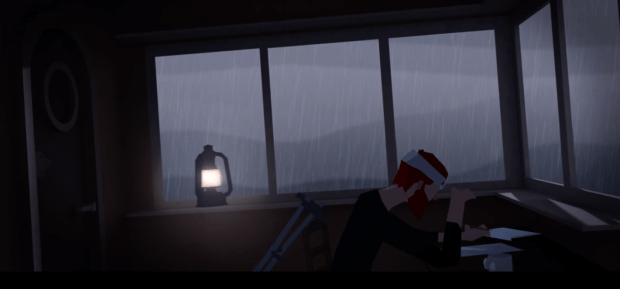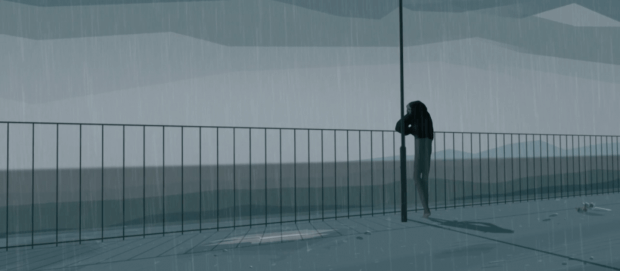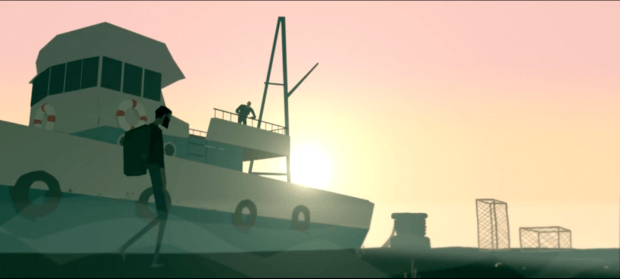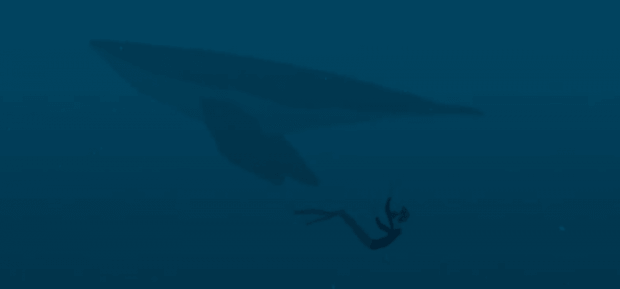Interview with Lawrence Rowell (‘Pa.’)
Amongst this year’s crop of films that have stood out as great pieces of short form filmmaking is Pa., a delicate tale weaved into a stunning, stripped-back animation style. Developed between two housemates whilst isolated from the internet and other distractions, Pa. is a tale of self-discovery and the ability to grow within oneself. Running at a little over five minutes, the film tells a circular narrative that makes it an enjoyable, thought-provoking and altogether satisfying watch.
Developed in part by Lawrence Rowell, an animator and illustrator based in London, UK, the film was created alongside Kapitolina Tcvetkova-Plotnikova a theatre director and choreographer, which goes some way to explain the poise and structure of the film. We took the opportunity to talk to Lawrence both about his involvement with Pa. and also work in general.
How were you approached by Kapitolina Tcvetkova-Plotnikova to work on the film?
Kapitolina and I were living together for two months in her house in a small farming village in the mountains of Asturias. The project actually began completely spontaneously. We were living in a very simple old house, a long way from the nearest town, with no central heating, no internet etc, and needed something to focus on. I began to make this animation by myself and the story was very different, but Kapa had this concept that fit very well with the images Id already created so we brought them together and it evolved naturally from there.
What was it like to collaborate with Kapitolina, her being a theatrical director by trade?
I actually came from a theatre background myself. I was working at the Royal National Theatre in London as a digital artist, and then on the Sochi Olympics as a technical animator, so for me it was very natural. Kapa specialises in physical theatre and choreography, which is a great mind to have for animation. She is used to directing actors, and since character animation is essentially an acting performance it worked perfectly. Kapa is also an endless vessel of ideas so it’s nice to know that she will always have several suggestions to solve any problem.
Can you elaborate on how you developed the film’s narrative and its origins?
My process always begins with a mental image of a small moment. In this film it was the moment when Cesar (the main character) comes through the door of the ship out of the rain. The original image was a combination of two shots that went into the final film. I had envisaged the character walking down the stairs when his head begins to distort causing him to stumble with the momentum of the ship. The original story was about the character’s struggle with addiction, and his descent into dark madness whilst going ‘cold turkey’ on this ship. Kapa found the question of motivation within the character more interesting than watching his recovery, and developed the idea around fatherhood and the core concept of this personal diary entry that evolves with the character through the stages of suicide note, to confession, to a profound promise. Once it then falls into the hands of his daughter it takes on another life as a chilling revelation, but simultaneously inspiring and heart warming given the understanding she has of the man he became.
Stylistically the characters are very stripped back, was this a conscious choice or is this your personal style?
This was a conscious choice, yes. The whole film is actually very ‘stripped back’ in every aspect – the characters and environments are geometric and simple, the story is not complicated, and the music is somewhat minimal. Since the story focuses on a man who has pulled apart his own character and found his core value, It felt right to reflect this in the design.
How do you go about creating characters for a project, be they personal or for a client?
Usually when creating characters for a client they have a strong idea of what they want, and it’s just a case of capturing the essence of whatever that is. That process will usually start with a written description, or a set of scenarios in which the character must fit, to which I will respond with sketched ideas. I draw the initial forms and posture very quickly, and instinctually know when it’s right. If it doesn’t feel right at that basic scruffy level, then it never will be. For personal projects the process is generally the same except I know the characters very personally before they ever take any shape, so the capturing stage is a lot easier. When beginning the development of a character in my mind I tend to visualise a situation, and imagine how my character’s body language will respond to the light, or the space, or its own weight. The body language will then tell me a lot about the character’s personality and history. Creating characters is something we all instinctually do as children, and as we grow and experience more our characters become more complex, but I imagine the mental process changes little.
The script is both dark and incredibly heartwarming, did you find yourself engaged with the film emotionally during its creation? If so, did this assist the creative process at all?
Animation often takes on dark tones, I think due to the nature of the process – often it’s made in solitude, late in the night, fueled by too much coffee! I think it’s impossible not to become emotionally engaged with the process of something like animation. As I mentioned before, it’s essentially acting and so you are putting a lot of yourself into it, as well as getting inside the minds of the characters. Such an amount of energy and time is invested in every detail that it becomes a part of you, and like all parts of yourself, you can only ever see it from your own self-conscious, distorted point of view. I have no idea what other people see when they watch this film, but for the creators the closest feeling, I guess, is like looking in the mirror in the morning. Much like how on a bad day you will spend endless time trying to fix you hair, or worrying about your complexion, film makers without a deadline would spend endless time tweaking every little detail and probably never be satisfied. But in answer to the original question, it’s not so much that it assisted the creative process, more that it is a vital part of the creative process.
How much development went into the pre-production and design style?
The whole production period was actually only 5 weeks, so there was not a lot of time spent on pre-production. Since I was the only person working on the visual aspects, I was able to work very naturally and let new ideas evolve on their own. I used to work sometimes with another filmmaker called Matthew Robins, and we share the same love for unstructured spontaneity. Often with clients it’s not possible because you need to maintain their confidence throughout the production process and unless they know you well, and trust you completely, you will not be given that freedom. So on personal projects I like to go with my instincts and feel around in the dark until I find the light switch, rather than keeping my eyes on the map.
How have you found the audience response to the film has been?
I try to stay ignorant to these kind of things because, as I mentioned before, any comment or critique feels like a very personal judgement. Though, I am very humbled and surprised at the positive response it has received. Many people have felt the exact emotional response that Kapitolina had intended which is fantastic – the sense of coldness, but with something strange and warm lingering afterwards. It’s a beautifully complex emotion to try and inject into the audience using such a simple film, but I think Kapa did a brilliant job.
You’ve worked on a very diverse range of projects, do you seek out these opportunities or do others see something in your style they want to work with and approach you?
I don’t know what others see in my work, but it is often the case that I am approached out of the blue. I am very lucky and grateful to be able to work at all, doing what I love, and so I put my heart into every project. I hope that this is what reflects and attracts people, but I’ve never really thought about it actually.
What are you working on currently/ next?
I have just finished a project for a London production company working with the British Legion charity. For now my time is completely consumed by another animation project which I am actually not able to say anything about. After this, Kapitolina and I will be working together on a new animated short exploring mental illness with some very interesting source material.
For more on the work of Lawrence Rowell visit lawrencerowell.wix.com/digitalart





